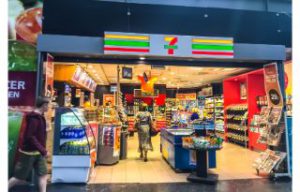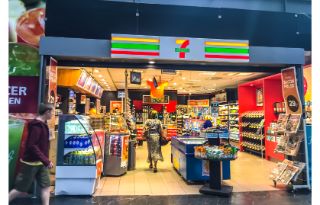
The Australian convenience industry is now worth $8.8 billion, the AACS’s highly anticipated 2019 State of the Industry Report has found.
Released yesterday, the report gives a snapshot of how the industry and Australia’s 6995 stores performed last year.
The category driving the most value was Food, which accounted for almost half the industry value at $4.038 billion and which grew by close to 6%.
However, Non-Food categories were down 1% on 2018, mainly due to a slide in Tobacco, which grew just 0.83% last year compared to 6.4% in 2018.
Packaged beverages was another strong performer, up 4.4%. Incredibly, the report found close to three quarters of convenience shopping baskets included a beverage in 2019.
“Convenience customers are increasingly including a beverage among their purchases, in many instances combined with a Food on the Go purchase, with the trend to healthier alternatives continuing to play out and new market entrants in 2019 having a positive impact on the category,” AACS CEO Jeff Rogut said.
The biggest sellers in the category were energy and soft drinks and flavoured milk for dollar share, while tea and protein drinks delivered the strongest growth.
For the third year running Hot Dispensed Beverages remained the fastest growing category, increasing in size by a further 18% and totalling $46 million in sales. The report also found those who frequented convenience stores for coffee did so on average more than once every two days.
Food on the Go was another star performer, up 11.5% last year, making it the second fastest growing category. It accounted for 38% of total channel growth and sales were an incredible $659 million.
However Take Home Food was down slightly, at 3.5% growth, however the category still delivered a $5 million sales growth from 2018. And Confectionery, Snackfoods and Ice Cream were all also grew in value last year.
Merchandise sales grew 2.1% and the value increase in sales was $179 million, which was slightly down on 2018’s $201 million.
While last year was not without its challenges, however Mr Rogut said despite this, 2019 was on of the best-performing for the industry over the last 30 years. And flagged that despite the significant constraints posed by COVID-19, including the cost routing associated with an increase in tap-and-go payments, the adaptability of the industry would see it emerge strong at the other end.
“The challenges and the changes will keep coming, the COVID-19 crisis being the latest factor to impact our stores, but convenience remains resilient, responsive, innovative and in many areas, ahead of the curve. The outstanding efforts of the retailers and suppliers to convenience give us every reason for continued confidence,” he said.
“The strong 2019 result, and the way we are still serving our customers today in bright, modern, clean and safe stores, is a testament to the many great operators and staff who make our industry tick.”
Other challenges include fuel theft, which cost each store an average of $166 per week. As well as drops in Tobacco growth, although this was still found to be an important category for convenience.
The report uses data provided by retailers and is complied by Convenience Measures Australia. The report is available to AACS members as part of their membership, or available for purchase to non-members.

